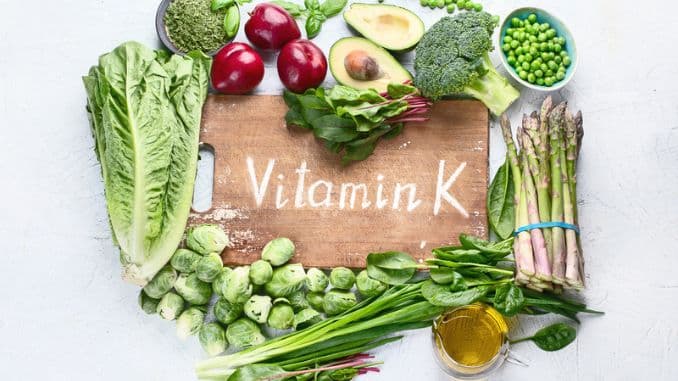
Today, I have an article for you on vitamin K.
It is from Sol Orwell.
Sol has created an amazing guide on supplements.
Sol’s guide, Supplement Goals Reference Guide, highlights the research on supplements and what it says about supplements and their effects on health.
Sol knows that I focus on injury and pain. He felt people needed to know more about vitamin K because most people don’t.
Enjoy!
Rick Kaselj, MS
What is Vitamin K?
It is fat-soluble and can come in several forms: K1 and K2. It is surprisingly non-toxic for a fat-soluble vitamin, and similar to vitamin D, it appears to have a gap between the recommended daily intake and its optimal intake.
All the above molecules work via the ‘vitamin K cycle,‘ which is how these molecules exert their benefits.
How does Vitamin K work?
How vitamin K works is a bit indirect. Vitamins either work as a ‘cofactor‘ (associating with an enzyme to optimize its function), or they work directly on receptors to start signaling through the cell. Vitamin K is in the former but works on a particular class of proteins known as ‘Vitamin K dependent proteins.’
When modified, the vitamin K-modified glutamate residue in this class of proteins switches them from an ‘inactive’ to an ‘active’ state. The vitamin K cycle (mentioned previously) is the cycle that activates these proteins with vitamin K.
How does this benefit heart health?
A process known as soft tissue calcification occurs when calcium deposits onto soft tissue, forming bone-like surfaces. This can occur in most soft tissue, including arteries. When calcification of arteries occurs, it is known as ‘stiff arteries.’
Artery stiffness is a large risk factor for cardiovascular disease and mortality, aside from being atherogenic. Interestingly, the main side-effect of vitamin D overdoses is increased arterial calcification.
The protein known as osteocalcin is a negative regulator of arterial calcification; in other words, it works to prevent how much calcium is deposited in arteries and slowly removes calcium from the arteries as well. This results in a preservation of arterial flexibility and prevents (somewhat) the increased risk of stiffness from occurring.
This is interesting because many herbs or supplements reduce the risk for cardiovascular disease, but they tend to work via reducing triglycerides or cholesterol, blood pressure, or plaque buildup (atherosclerosis); the reduction in calcium buildup is not a common mechanism.
How does this benefit bone health?
Two cell types in bone tissue are osteoclasts and osteoblasts, the former of which mediates bone breakdown (to supply the body with vital minerals). The latter is the opposite and supports bone formation. In many states of bone loss, such as osteopenia, the activity of osteoclasts is significantly larger than the activity of osteoblasts.
Vitamin D not only increases the activity of osteoblasts but also proliferates osteoclasts. Vitamin K inhibits the ability of Vitamin D to increase osteoclasts but doesn’t interfere with the beneficial effects. Although vitamin K is beneficial, it more commonly synergizes with vitamin D.
When looking at human trials, this tends to manifest itself as a reduced fracture rate of bones. This vitamin strengthens the bones but does not reliably increase bone mineral density.
Sol Orwell


